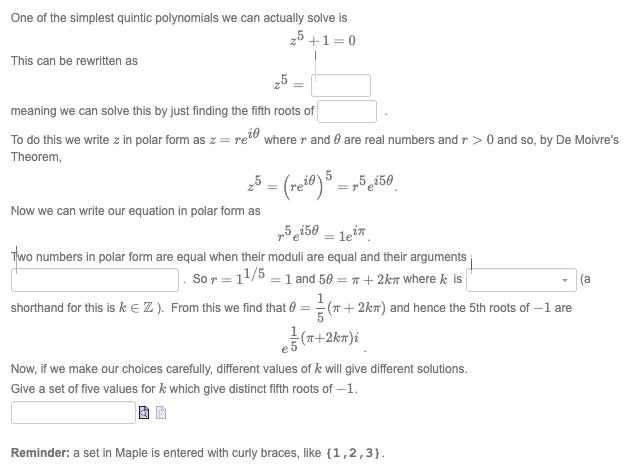Answered step by step
Verified Expert Solution
Question
1 Approved Answer
One of the simplest quintic polynomials we can actually solve is 25+1=0 This can be rewritten as z5 === meaning we can solve this

One of the simplest quintic polynomials we can actually solve is 25+1=0 This can be rewritten as z5 === meaning we can solve this by just finding the fifth roots of To do this we write z in polar form as z = re 20 where r and are real numbers and r > 0 and so, by De Moivre's Theorem, 25 === = (reio) 5 =r5 ei50 5150 lei = Now we can write our equation in polar form as Two numbers in polar form are equal when their moduli are equal and their arguments Sor=11/51 and 50=+2k where k is shorthand for this is k Z). From this we find that = ( (+2k) and hence the 5th roots of -1 are (+2km)i Now, if we make our choices carefully, different values of k will give different solutions. Give a set of five values for k which give distinct fifth roots of -1. Reminder: a set in Maple is entered with curly braces, like {1,2,3}. (a
Step by Step Solution
★★★★★
3.51 Rating (144 Votes )
There are 3 Steps involved in it
Step: 1
To find five distinct values of k which give distinct fifth ro...
Get Instant Access to Expert-Tailored Solutions
See step-by-step solutions with expert insights and AI powered tools for academic success
Step: 2

Step: 3

Ace Your Homework with AI
Get the answers you need in no time with our AI-driven, step-by-step assistance
Get Started


